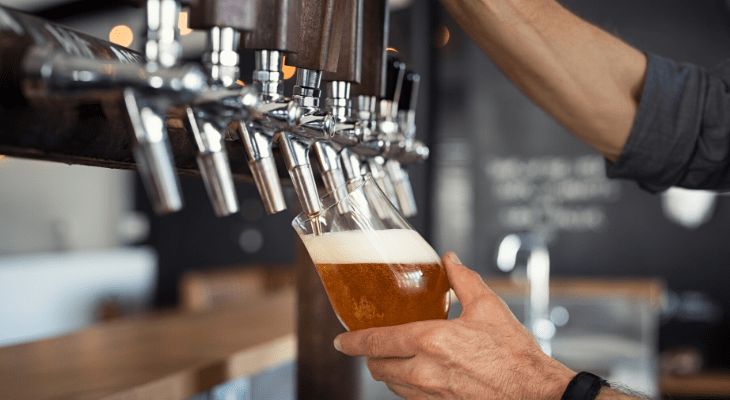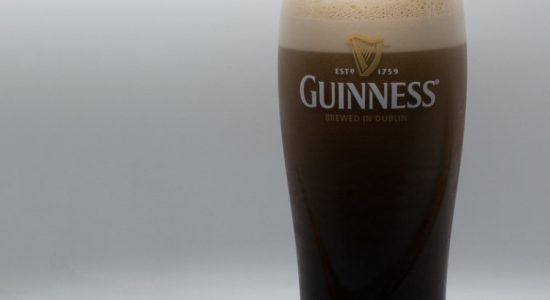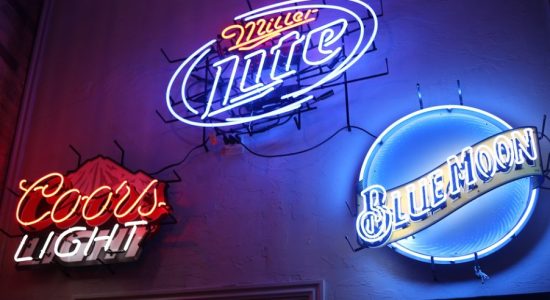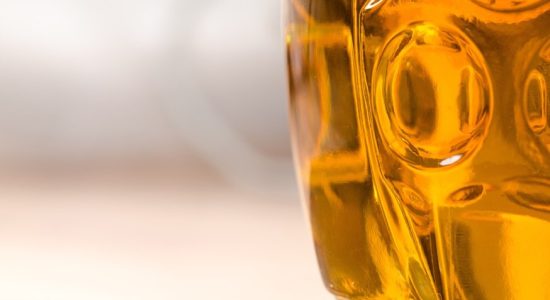What Is Draft Beer? and How Is Draft Beer Made?
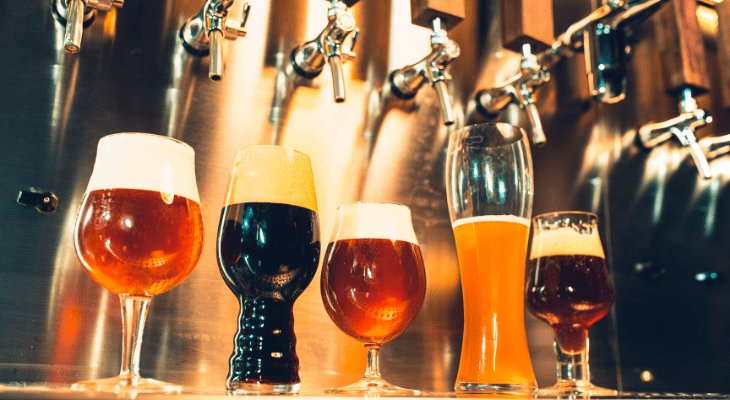
There is a major difference between every beer type. And while talking draft beer, or draught beer, there is an even larger difference between bottled and draft beer. Also, there are a lot of different opinions about the differences, but I am here to get you the right answer.
What is draft beer? Draft beer is beer that is served straight from a cask or keg rather than a can or a bottle. Draft beer, also called draught beer, is often considered better quality than most other beers because of the very secured packing, where either sunlight or oxygen can penetrate the keg.
If you are interested and curious about beer as I am, keep reading this post about what draft beer is, how it’s made and much more.
Read Also: What Is The Easiest Type Of Beer To Brew?
What Does Draft Beer Mean?
Draft beer is a beer stored in a keg or a cask.
Back in the days beer was transported and even served directly from barrels, until the beer engine was invented by Joseph Braham in 1785. The word ‘’draft’’ originates from the word dragan, which is an old English word and means ‘’to carry or pull’’.
Most countries as New Zealand, Ireland, UK, and Australia pronouns and spells it as draught, while Northern America pronouns it a draft.
By the time the beer engine became popular, the term draught was used as a term for the act of serving or drinking beer and afterward transferred to the beer served via the hand pump.
History of Draft Beer
It was first in the early 20th century when draft beer started to be served from pressured containers. In 1936 artificial carbonation was introduced in the UK. This method first settled in the UK in the late 1950s.
This method had left its mark in Europe where it quickly became the preferred method, wherefrom the carbonation method afterward spread to the rest of the world.
The term ‘’draught beer’’ became, in the early 1970s, almost only referred to beer served under pressure.
A group in Britain, the Campaign for Real Ale, was in 1971 founded to protect traditional beer and brewing methods. This group came up with the term ‘’real ale’’ to differentiate the difference between cask served beer and beer served under pressure.
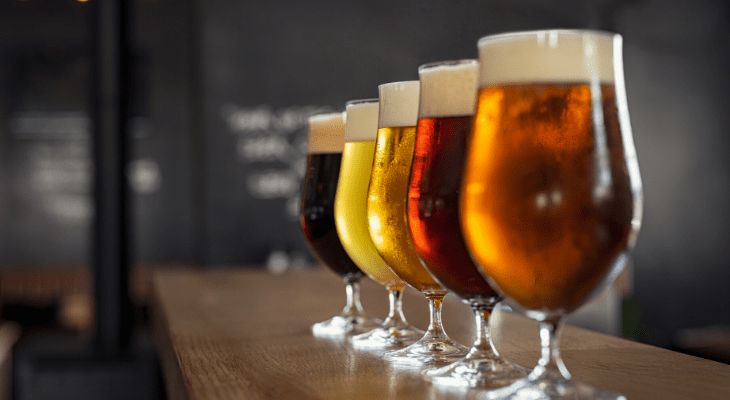
What Is Keg Beer?
A keg is different from a cask. A keg has a single opening in the middle of the top, where the flow pipe is attached. Kegs are also artificially pressurized with carbon dioxide or both carbon dioxide and nitrogen gas, after fermentation.
Keg became popular in Europe and the UK. It actually became so popular that it started to replace the traditional cask beer. The Keg beer replaced the traditional cask beer in England because it requires less care to handle.
When dispensing dry stout and other creamy beers, nitrogen is used under high pressure. This displaces the CO2 to form a rich, thick head and a less carbonated taste.
The bottled gas for creamy beer is premixed and is usually around 75% nitrogen and 25% CO2. But this premixed bottled gas only works for creamy beers, and is called ‘’Beer gas’’.
If this Beer gas is used to other beer styles, the last 5% to 10% of the beer keg will taste flat and lifeless.
Keg vs. cask beer
The difference can be tricky on these two types of beer. Also, a question that abounds is which one of them is better. But, first things first. To know which one is better we will have to know the difference.
The funny thing about these two different beers is, that they are brewed the exact same way, but the cask beer is only partly ready before it comes into the casket.
Like other beers it shall enter the second fermentation, this just happens when it goes into the casket, added a bit of sugar to react with the yeast.
A keg is more like a giant can of beer, and the beer is filtered and generally sterilized before going into the keg so that it’s ready to drink.
Overall, cask beer tends to be less fizzy and is served at around 11°C-13°C through a handpull. Keg beer is usually fizzier and served at a cooler temperature, generally between 2°C-8°C through a beer font.
The cask beer is a little bit needier in handling than the keg beer is. The cellar temperature is very important. The casket beer should be stored at a temperature of 10°C-14°C.
Furthermore, the beer has to be drunk within a few days after opening. Oxygen for beer is like caries for the teeth.
Casket beer is carbonated by carbon being released naturally in the process and a product from the yeast is reaching with the sugar to create alcohol.
The kegging process, on the other hand, involves adding carbon dioxide to carbonate the beer, which also is why it’s more fizzier.
Kegged beer is more easy to deal with. It offers much more leniency of the temperature, and lasts a lot longer than the cask, because the keg is an airtight container, so there is far less oxygen contact.
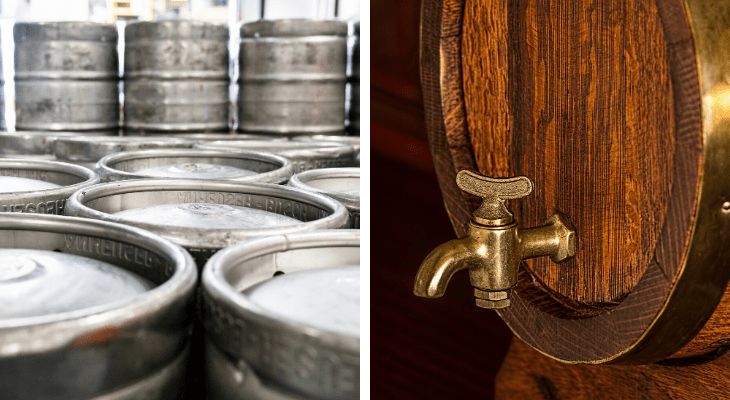
How Is Draft Beer Made?
Believe it or not, draft beer is made the same way as bottled beer. The only difference is, that instead of filling the beer in a bottle, you fill it in a keg or a cask. Although the cask beers secondary ferment happens when it goes into the casket.
Draft or draught just means that the beer from the keg or cask is served via the sprout of a beer faucet. Typically there will be a little difference between the carbonation of the casket and the keg beer.
How Are the Different Draft Beers Made?
As mentioned above, most beers are made the same way. Or, at least there are some basic steps all beers go through in the brewing process. I will now take you through the basic way.
- The malt grains are a core product in beer making. First up the malted grains are crushed to expose their starch inside.
- Afterward, the crushed malt grain is added some hot water. The waters temperature is usually around 65°C to 70°C (150°F to 158°F). After the mashed grains are mixed with hot water it’s now called mash.When the grains are ‘’mash’’ it activates the enzymes, that are already present in the grain. When these enzymes are activated, they turn the starches into simple sugars that can be fermented by the brewing yeast.
- After the conversion of the starch is done, the sugar comes out of the grains by rinsing once again with water. This process by adding water is called the sparging, where the process of straining the liquid (wort) is called lautering.
- After completing the sparging, and an appropriate amount of the wort is collected, the wort is then boiled in a kettle. And this boil is important for many reasons.
Among others, the boil is important because this is where the hops are added for flavor and bitterness. - When this important boiling is completed, the wort is cooled down to around fermentation temperature and is transferred into a fermentation vessel. This is also where you add the yeast.
- Now, the yeast fermentation is going to go through two different stages; the primary fermentation (activ fermentation) and secondary fermentation (maturation).
The primary fermentation is where the CO2 bubbles and the secondary fermentation is where the yeast converts fermentation by-products into non-offensive compounds.
Would you like to learn more about sugars in beer? you should try this post: Maltose? The Unrivaled Guide To Understanding Maltose
These may be the overall steps almost all brewings have in common, there are three main factors to achieve very different beers; grain recipe, selection of hops, and selection of yeast. In the following I will go through these three factors:
- Grain recipe is important for the final result of the beer. The type and quantity of the grain will have an impact on the taste and the color. The most important subtypes of grain are base malt, crystal malt, and roasted malts.
Base malt is used to increase the sugar in wort. Crystal malt gives it the color, mouthfeel, and flavors from light sweetness to deep-fried fruit. Roasted malts also provide color, roasted flavors, and astringency. - Selection of hops is to be chosen and performed wisely. There are a lot of things that can have an impact on the final taste of the beer while talking about hob selection.The variety of hops that are used, the amount of hops used when it’s added to the wort or beer will all have an impact on the final result.
Also, it’s important to keep in mind, that there are different kinds of hops.Some hops come with spicy, earthy notes, while others come with citrusy or fruity notes. All of the notes impart the given flavors to the beer.
The more hops you add in the boil, the bore bitter the beer gets. The beer also gets more bitter the sooner you add your hops to the boil. On the other hand, the later you put your hops into the boil, the greater and the more hop flavor the beer gets.Also, if you add dry hops during the fermentation or post-fermentation, it will provide robust hop aroma and flavor.
- Selection of yeast is also an important factor for the final result. Some yeasts produce more esters, while others produce more phenols.Also, different strains consume more or less sugar. The sugar will affect the mouthfeel and the sweetness of the final result.
There are two main groups of yeast; lager yeast an ale yeast.
Ales is producing more complex beers, while lager tends to produce more clean and crisp beers.
The temperature of the wort during the fermentation can fine-tune the flavor that is produced by the yeast. I know that this has nothing to do with which kind of yeast you choose, but this is also important to keep in mind.
Also read: Best Beer Recipe Kits
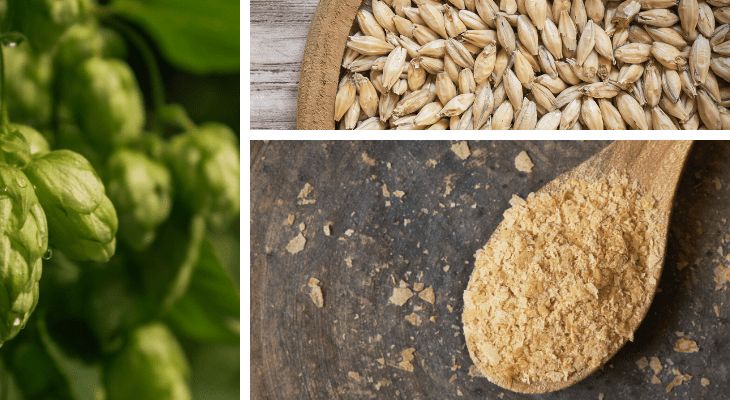
What Is The Difference Between Draft Beer and Bottled Beer?
There are thousands of different beer and thereto the same number of different tastes. But, it is not only the way they are brewed and which ingredients used in the brewing that gives beers different tastes, but it’s also the serving.
In this sense there are two types of beer;
- the draft beer
- the bottled beer
Draft beer
Draft beer is poured down from a tap into a glass.
Sunlight: In terms of sunlight, draft beer is not really to worry about. The beer is contained in barrels or kegs that offer some good amount of protection against the light.
Cleanliness: The draft beer lines can easily be infiltrated by mold and bacterias because of poor maintenance. This can cause bad flavors odors.
Taste and aroma: Draft beers are usually more flavorful because the beverage is poured directly into a glass. This makes the aroma stand out for a while.
Bottled beer
Contrary to the draft beer, bottle beer are contained in a bottle or a can and is drunk from the bottle or the can.
Sunlight: In addition to the protected draft beer, bottled beer is more vulnerable to sunlight. Ultraviolet rays coming from the sun can easily penetrate the clear bottle surface and damage the beer.
Cleanliness: Bottles almost always observe the quality and sterility of their sealed bottles.
Taste and aroma: The bottled beers will store all its aromas inside the bottle. But bottle beers can actually imitate draft beers, but you will have to pour it into a glass before you drink it. So, let the beer breathe a bit before consumed.
These are the main differences between draft beer and bottled beers. There are pros and cons to both of them. If you ask me, there is nothing better than a draft beer, but this is not a beer I will carry around, then I would choose the bottled beer.
You should read this post: What Are The Best Bottles For Home Brewing?
Is Draft Beer Stronger Than Bottles Beer?
The very short answer is no, draft beer is not stronger than bottle beer. Would you like an explanation?
Let’s assume you have the exact same beer, one in a bottle, and one in a keg, then there would be absolutely no difference. I mean, different beer types come with different ABVs. The only explanation I have to the question would be as following:
If you would feel a little foggier after drinking a draft beer, than you normally would be after drinking a bottled beer, maybe it’s the amount of beer.
A normal beer bottle has an average size of 335 ml (12 oz), where normal-sized draft beers have an average of 475 ml (16 fl-oz). This could be one explanation.
If you don’t mean stronger by the amount of alcohol, maybe you mean by the taste and aromas. If this is the case, the explanation could be the storage.
In most bars, they keep their kegs in a cooler, where some bottles are kept in a fridge that is opened more often. These temperature changes are no good for the beer. But then again, this may not be the answer, it’s just my best explanation.
Also read: How Many Types Of Beer Are There?
Which Is Cheaper, Draft or Bottle Beer?
While talking about bottled beer and keg beer many people think that the keg is cheaper to buy than the same amount of bottled beer. But, some might forget that it’s not only the keg you would.
Most people forget that they also have to buy or rent a keg tap, a bucket, ice, and cups. All things considered, is draft beer cheaper than bottled beer? let’s find out.
So, of cause, it all depends on which beer you compare with each other. If we assume it is the same beer in the bottle as in the keg, we should be good to go.
Generally, the keg beer (with all the acquisitions) will be more expensive than buying the same amount of the same beer, just bottled.
If you only have to buy the keg, and you already own the tap, a bucket, ice, and cups, it could be cheaper for you to buy the keg beer.
But, there is an alternative to buy even cheaper beer, canned beer. So, if you are not a beer snob, this would be the most advantageous solution for you! On the other hand, if you are a beer snob, as I am, you should probably stick to the bottled or the keg beer.
Not because the canned beer isn’t as good as bottled or kegged beer, some just think this isn’t as fancy as the other options. The quality is the same, cause it’s the same beer.
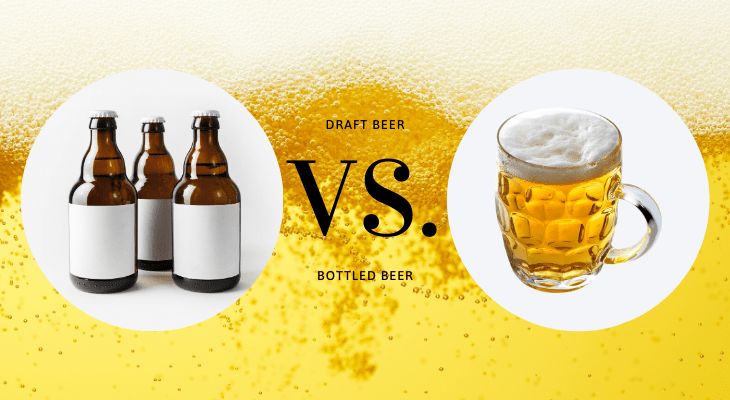
Why Does Draft Beer Taste Better?
I am personally one of those who think draft beer tastes much better than bottled or canned beer, but why is that? There are a few reasons why draft beer might taste better than bottled beer.
First up, the draft beer is fresher than bottled beer. The draft beer doesn’t sit around during bottling, and it certainly does not sit on shelves afterward. The draft beer is usually kept refrigerated until use.
Another reason is that draft beer is not pasteurized, bottled beer are. Pasteurization is a process where the liquid is heated up to high temperatures to eliminate germs.
This process is necessary for bottled beer because they usually are stored longer before consumed. The draft beer is simply just refrigerated until it’s served.
And then there are the oxidation, the beer’s worst enemy. Bottled beer is usually more exposed to oxygen because it’s divided into individual containers before it’s served. Draft beer is not. They are stored in largely filled kegs with pressurized tops.
And then, the light. Bottled beers often come in glass bottles that let in the light. The hops in the beer are reacting on the light and end up making it more bitter. That is the reason why beers in light glass bottles are skunk faster than those in brown, dark glass bottles.
The draft beer, on the other hand, is stored in these ‘’light-tight’’ container, so to say. And also, as mentioned, they are often stored in a fridge, where there doesn’t slip a lot of light in.
Is Draft Beer More Carbonated?
Both yes and no, it all depends on the tapping system.
Depending on which tapping system used, the foam can get thicker. A well handed, fresh keg will most likely have better carbonation and taste than the same beer in a bottle.
However, some keg beer dispensers have a function that allows generating an extra thick layer of foam on top of the beer. This gives the foam a longer lifespan and will help the beer from oxygen.
Some even use a mix of both carbon dioxide and nitrogen gas, to give the foam extra small bubbles and a more creamy texture.
What Makes Draft Beer Taste Bad?
Just as satisfying a draft beer can be, just as disappointing it can be too. The source to a great draft beer is clean draft lines. If the draft lines ain’t clean, which in many cases they are not, it will ruin the experience completely.
Neglected draft beer dispensing systems are prone to pests of their own, such as proteins, microbes, and mineral deposits that can degrade even the best beers ever.
A beer that has been through dirty draft lines may acquire a sour, vinegary flavor due to acetic acid, and a buttery flavor from a chemical called diacetyl.
So, squeaky clean lines are as important to beers flavor as its ingredients.
Therefore you should make a quality check of your draft beer dispensing system, regularly, to make sure that your beer it’s best order.
